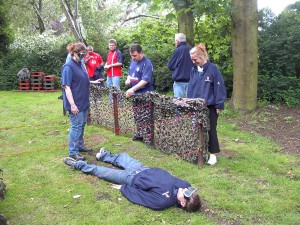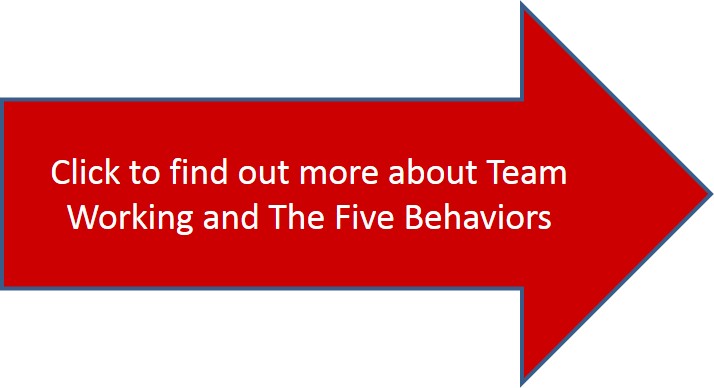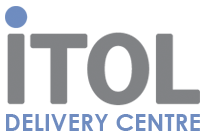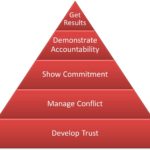
Podcast: Play in new window | Download
Team Building or Team Jolly?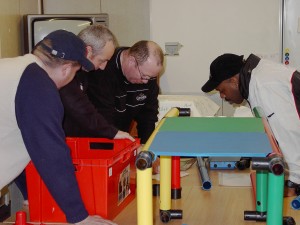
We’ve all experienced them. Some “clever clogs” in management decides that what we need is a good dose of team building so we can build a corporate raft to navigate us through whatever mess we find ourselves in this year.
Off we then go, to get muddy, and to “bond” with each other.
And when we get back to work, are we all team builded and all pulling in the same direction?
Well, some of us might be if we weren’t off work with the flu following over-exposure to the elements on our team building day!
So do these off-site, Rambo-esque types of event really work? Do we really find ourselves all “on the same page”, “saluting the same flag” and “singing from the same hymn sheet”?
For most of us? Probably not.
I remember visiting a “team building” establishment about 15 years ago on one of their promotional days to try out the activities. They consisted of rage car racing (an individual sport), pistol shooting (not a good idea surrounded by your team) and, wait for it, fly fishing. Fly fishing? That is probably the most non-team activity I can think of.
OK, so what does work then?
A Short Animated Video about Team Working for You
Patrick Lencioni and Team Building
Patrick Lencioni wrote a book called The Five Dysfunctions of a Team and it became a New York Times bestseller. Our eagle eyed team at The Development Company picked this up and found that Lencioni’s model is a great framework for facilitating the development of a team.
According to Lencioni, a team needs five behaviours to be a truly cohesive, highly productive and high functioning team. The behaviours are organised in a pyramid shape.
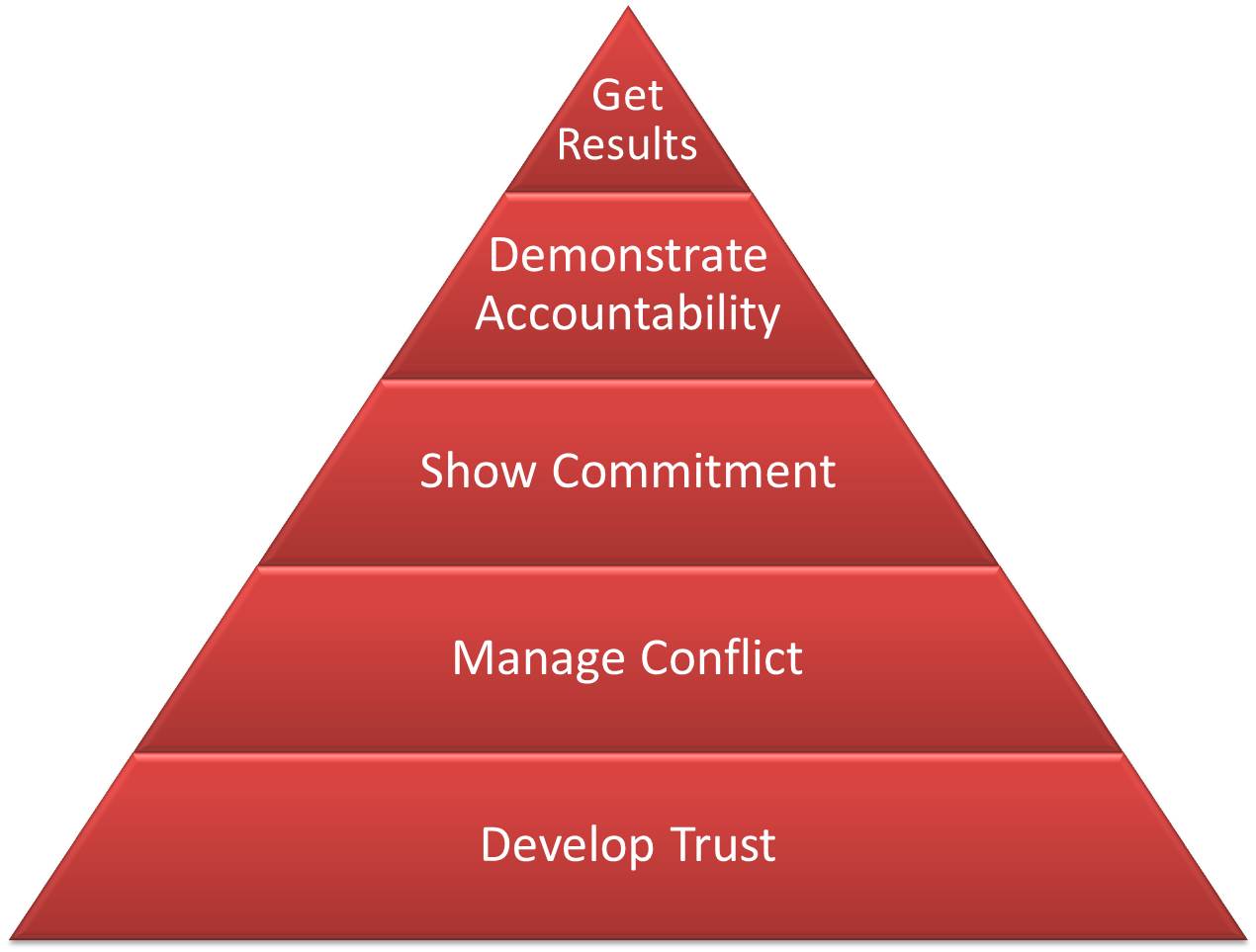
The team needs to start at the bottom of the pyramid as each behavior needs the foundation of the previous behaviour in order to be effective and sustained. Not suprisingly the first behavior at the base of the pyramid, Trust, is usually the most difficult to embed within a team, but when established becomes the basis of how Conflict, the second behaviour, is managed within the team.
The Five Behaviors of a Cohesive Team
The definitions of each behavior are:
1. Trust
Team members are open and honest with each other. There are no games and each team member feels relaxed with the others.
2. Conflict
Conflict is not hidden. Differences are openly discussed. Ideas are shared and debated.
3. Commitment
Each team member has buy-in to decisions made.
4. Accountability
Team members hold each other accountable for their actions.
5. Results
Everyone is focused on the achievement of the same results.
So What is the Team Building Process?
The five stages defined by Lencioni make sense.
The process starts with each team member committing to want to develop as part of the team. This is important as paying this process “lip service” will just not work. It requires people to become “real” within the team.
The use of a range of profiling instruments will give the team a start point and areas to work on.
The facilitation starts with Trust. What Trust is, what Trust feels like, what the current position of each team member is and what they want to do about it.
Each facilitated session ends with action planning by each team member.
Does it work?
The easy answer is “Yes”. The more detailed answer is to do with each team member. It will work if they want it to. However if one person is not committed to make it work then either get them committed to it, forget it or remove that person from the team.
Adrian Green
Adrian is Director of The Development Company Limited, an author, a facilitator, a coach and a serial blogger.
To find out more about developing you team email us via the Contact Form or talk to Adrian on the phone number at the top of this page.
If you enjoyed reading this blog, please share with your friends using the buttons below:

